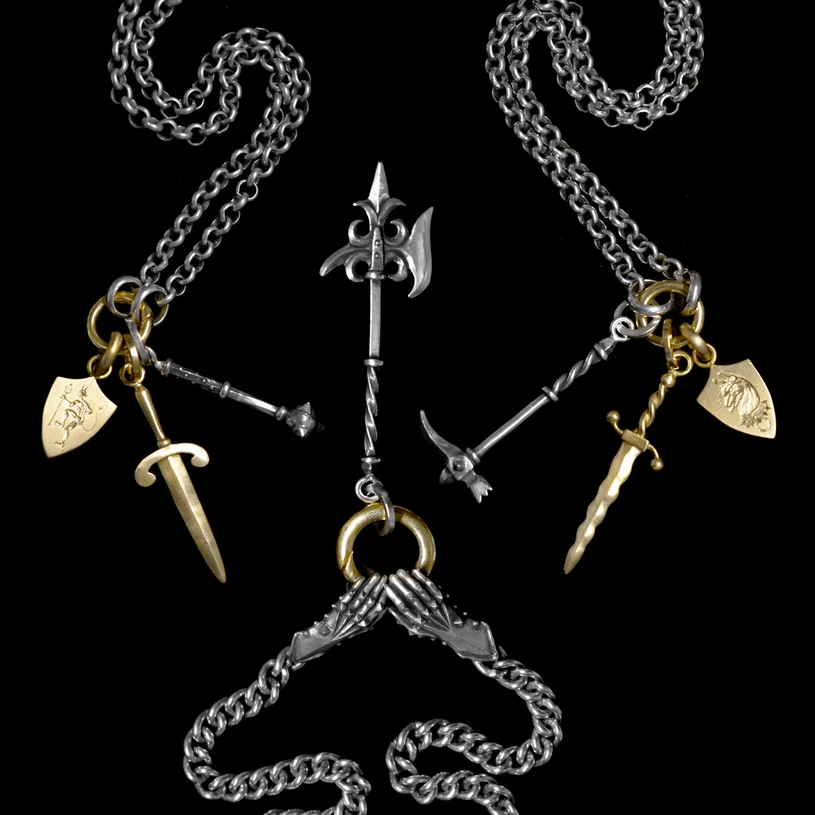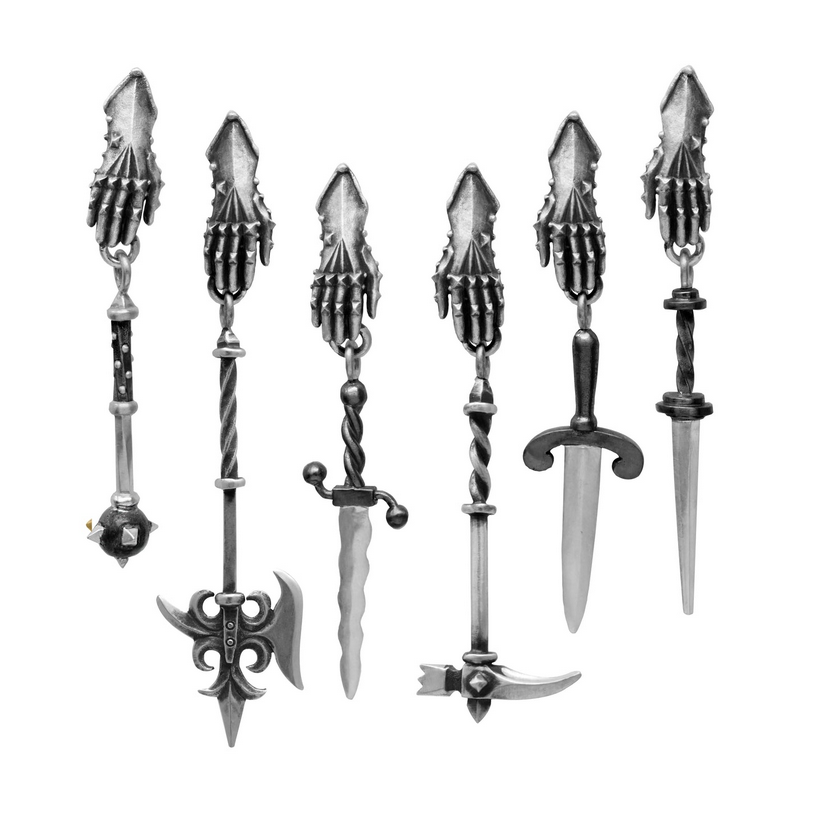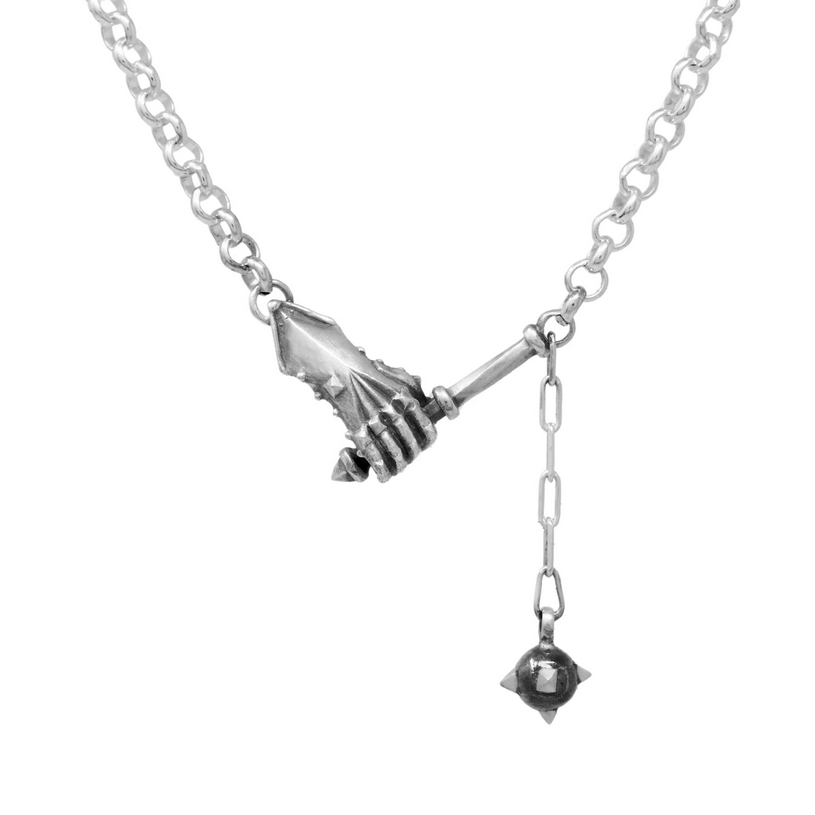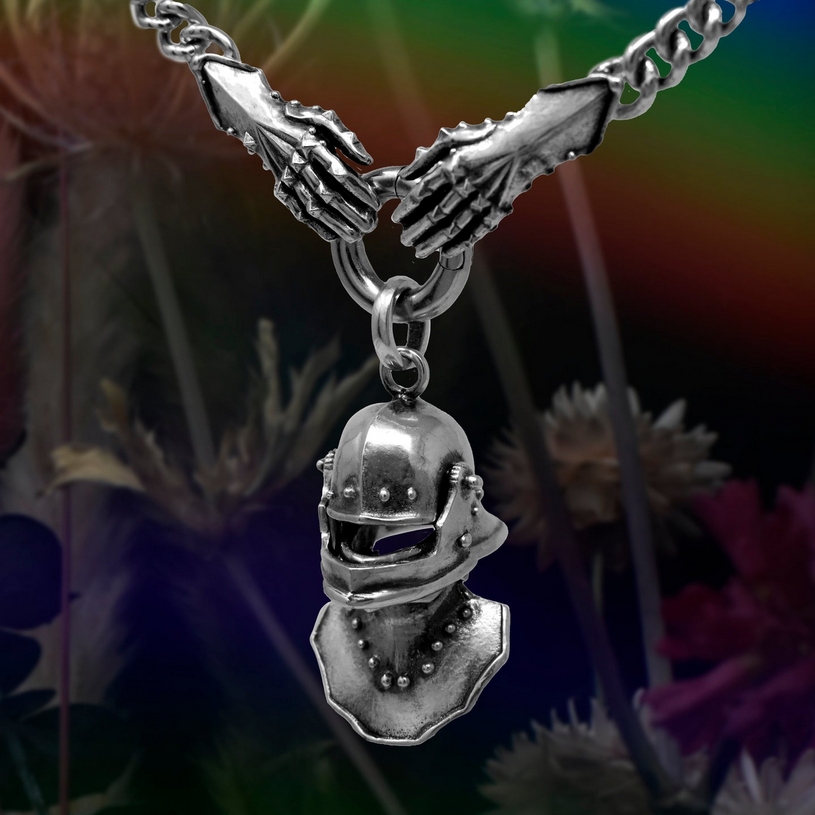b
Morgaine Faye’s Armory
The Armory Collection by jeweler Morgaine Faye features gauntlets, escutcheons, daggers, Lucerne hammers, morningstars, as well as an array of medieval weaponry and iconography including swifts and castle towers. The creation of these knightly pieces involves techniques traditionally used in armor- and weapons-making (forging, engraving, colored inlay, riveting, hidden kinetic components), forming a collection of charms, chains, pendants, and rings that can be layered and combined, giving them versatility as well as historical inspiration.



